Environmental Sound, Sonic Art, Physical Computing, Performance
The Breath of the Moon
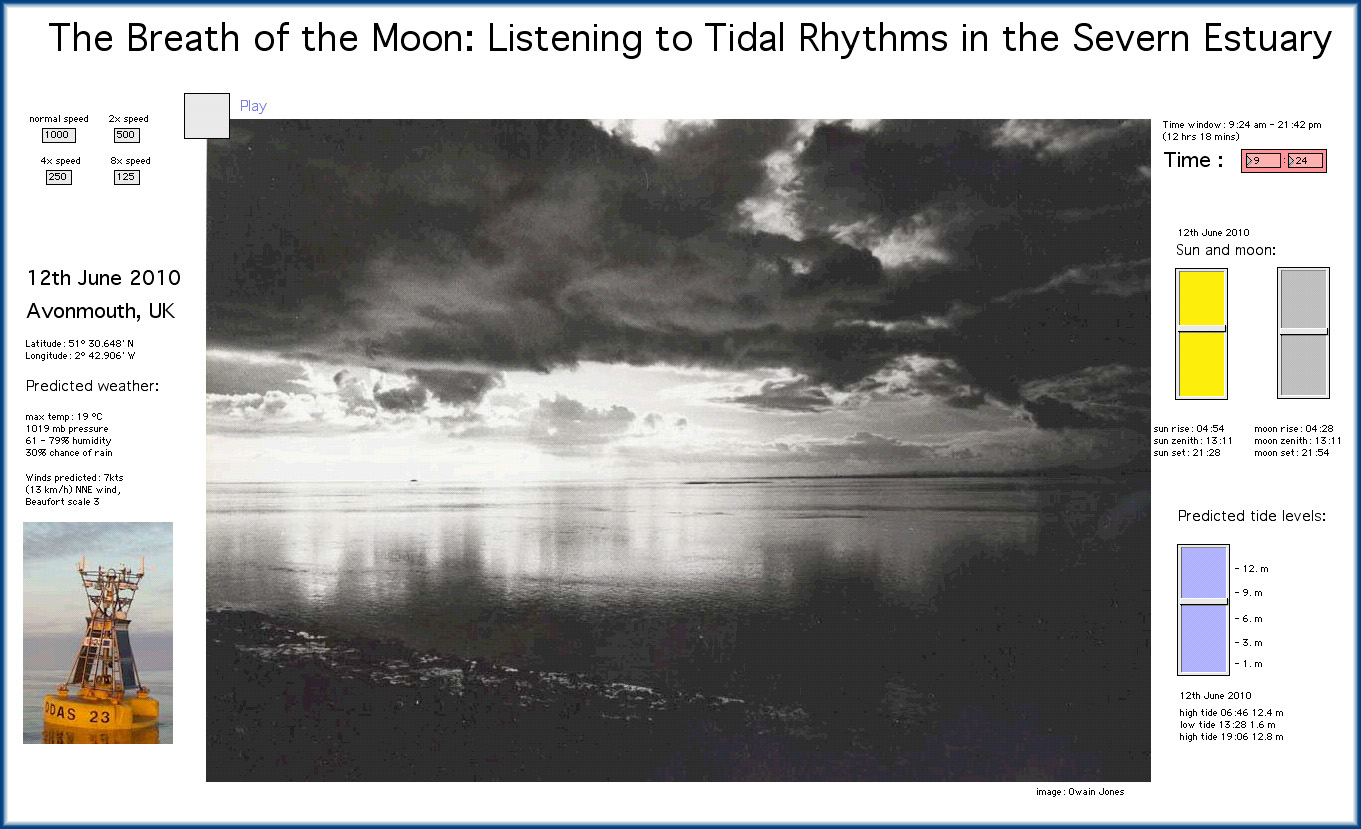
Breath of the Moon artefact by Michaela Palmer (screenshot), image by Owain Jones, 2010
The Breath of the Moon is a software application that sonifies tidal patterns at the Avonmouth Docks, for the duration of one tidal cycle (~12 hrs 18 mins). This involves the tide going out, reaching low tide, coming back in, reaching high tide and then starting to recede again. This phenomena has been translated into sound and, to make it more easily perceptible, contracted in time.
In this track, 7.5 seconds correspond to 1 hour of clock time at Avonmouth:
The composition itself is not a fixed arrangement of sounds, but changes according to tidal data so it sounds a little different each time. The software program generates sounds according to tidal information and also arranges sound samples in real time. Combining these two techniques provides a rich listening experience.
The sound composition for The Breath of the Moon was developed in 2010; the artefact was exhibited at the Bristol Festival of Nature in 2010 and 2012.
Related papers: Palmer, M. (2011). On Breathing and Geography: Sonifying the Severn as Shared Generative Art Practice, presented at ISEA2011 Istanbul, The 17th International Symposium on Electronic Art.
Palmer, M., & Jones, O. (2014). On breathing and geography: Explorations of data sonifications of timespace processes with illustrating examples from a tidally dynamic landscape (Severn Estuary, UK). Environment and Planning A, 46(1), 222-240 https://doi.org/10.1068/a45264
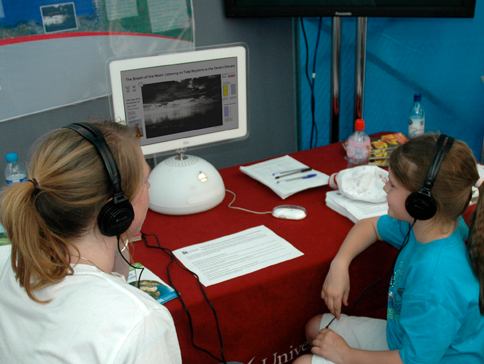

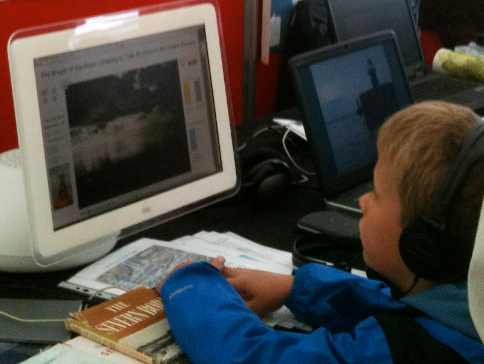
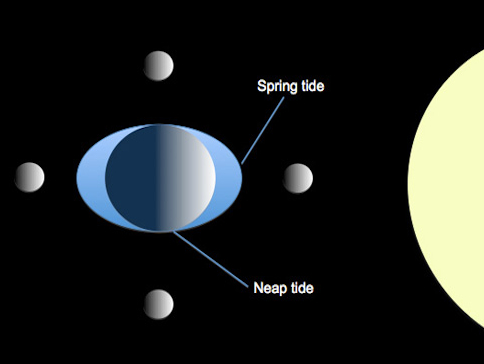
Concept
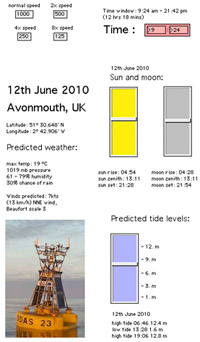
The software artefact sonifies weather and tidal conditions for Avonmouth using open data. As its source material, the work employed tide and weather predictions for Avonmouth for the day, as well as data from sun and moon calendars. Using the software Max/Msp, a mapping scheme was devised that would use number streams (representing the environmental data) to drive an arrangement of pre-recorded sounds.
In The Breath of the Moon pilot study, the sonification concentrated on the rising and falling of the tide at Avonmouth docks on the 12th June 2010. This particular tide was chosen not only because it coincided with a new moon (generating a very high tide), but also because it coincided with the Bristol Festival of Nature in 2010 where the artefact was exhibited. It was hoped that festival visitors would be able to relate what they heard to real tidal movements taking place in the estuary, and obtain an understanding for the 'living' landscape that is the Severn Estuary.
Further Information
The Breath of the Moon was developed in collaboration with Owain Jones. The aim was to raise awareness of the Severn Estuary as an internationally important intertidal landscape facing many pressures; and secondly to raise awareness of the communication potential inherit in sonification techniques.
Tidal estuaries are some of the richest ecological systems on the planet. The Severn Estuary is the largest estuary in the UK. It covers around 500 km2, of which a fifth are intertidal mud flats. The Severn Estuary has the highest tidal range in Europe; the second highest in the world. At the very highest tides the sea level will rise by as much as 14.5 metres over 5.5 hours, which is 3 times the height of a double-decker bus.

The Breath of the Moon title was chosen to reflect the complex connection between earth, moon and sun and its effect on the tides: when the moon is either full or new, the gravitational forces of moon and sun work together. Then the high tides are very high and the low tides very low, a phenomenon known as spring tides.
During the moon's quarter phases the gravitational forces of moon and sun work against each other. The result is a much smaller difference between high and low tides, a phenomenon known as neap tides.
The motions of sun and moon determine a large number of tidal aspects, but local factors such as shape and materials of the bay or the weather also come onto play. This means each tidal event is slightly differently.